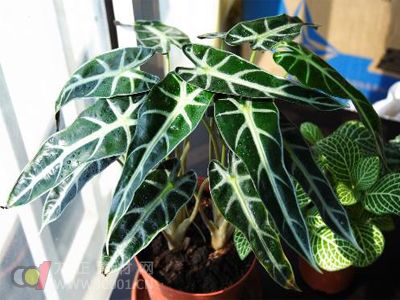Introduction of Guanyin Lotus Cultivation Technology :
Cultivation environment
Tiannan Xingke Guanyin is a perennial herb with thick stems, large paper leaves and wide arrow shape. It is widely distributed in the wet woodlands of southern China. The plants are tall and straight, the leaves are green and bright, and the adaptability is very strong. They are widely used as indoor ornamental plants for cultivation, and are very popular among the supporters. It is also cultivated with it and is often cultivated by ornamental species such as Guanyin Lotus and Meiye. Guanyin Lotus is like a hot and humid semi-yin environment, fearing the summer sun, the soil requirements are not strict, but the fertile and loose sandy soil is beneficial to the growth of tubers. When fertilizing, it is generally possible to use fertile garden soil.
Precautions
The cultivation of Jingtianke Guanyinlian is easy to succeed. In the growing season, except for shades from June to September, it is advisable to give half-day light at other times. If you are indoors, you should place it near the south-facing window. After being placed indoors for 1 month, it should be moved to a wet place under the shed for a period of time. Always water the soil to keep the soil moist, but prevent too much moisture from getting too wet or water in the basin, otherwise it will cause the roots to rot. Therefore, usually in the upper basin, a layer of coarse sand should be placed on the bottom of the basin as a drainage layer to enhance the drainage function. When drying at high temperature, it is necessary to spray water to humidify, so that it can obtain strong external conditions for growth. Fertilize 2-3 times a month during the growing season. Watering should be reduced after entering the room in winter, and the temperature should not be lower than 5 °C.

Guanyin lotus farming method:
Soil articles: The basin soil is loose and fertile, with good drainage and permeability. One-third of the humus soil can be added to the potting soil, plus one-third of the river sand or coal ball slag, and a small amount of bone powder is added. Since the soil is moist, the newly planted plants do not have to be poured with too much water to maintain their semi-dry state, which is conducive to the recovery of the root system.
Temperature articles: Hi-warm, semi-yin growth environment, growth temperature is 20-30 °C, winter temperature is 15 °C. In winter, the temperature is not lower than 5 °C, and during the daytime above 15 °C, the plant can continue to grow, can be watered normally, and fertilized properly; if the water is controlled to make the plant dormant, it can also withstand low temperature of 0 °C. The longevity grass is not heat-resistant. After May, the growth of the plant gradually stops and enters the summer dormancy period. The family can be placed under the corridor or inside the balcony, where there is no direct sunlight, good ventilation, no rain, and watering is stopped. Fertilize, so as to avoid plant rot due to sultry, damp, and soil water.
Illumination articles: Plants are dormant in high temperature in summer and cold in winter. The main growth period is in the cool spring and autumn seasons. In the growing season, sufficient sunlight is required. If the light is insufficient, the plant shape will be loose and not compact, which will affect its Ornamental, and plants growing in light, the leaves are thick and full, the plant shape is compact, and the leaves are beautiful.
Watering articles: Watering should follow the principle of “Don't dry, no watering, pouring and pouring†to avoid long-term water accumulation, so as not to rotten roots, but it should not be too dry, otherwise the plants will not die, but the growth is slow and the leaves are dull. Lack of vitality. During the high temperature period in summer, the leaf water evaporation is large, and the water demand is more. If the water shortage is easy to make the leaves wilting, it is necessary to spray water to the foliage frequently while keeping the environment moist, but the water in the basin must be avoided, otherwise the root system will be caused. rot.
Fertilization: Apply a decomposed thin liquid fertilizer or a compound fertilizer with low nitrogen, high phosphorus and potassium every 20 days. Do not splash fertilizer on the blades when applying fertilizer. Fertilization is usually carried out in the sunny morning or in the evening, and the water is poured in the evening or the next morning to dilute the residual fertilizer in the soil. In the winter, place it in a sunny place. If the minimum temperature is about 10 °C at night and there is a certain temperature difference between day and night, you can properly water it and fertilize it as appropriate to keep the plant growing. If you can't keep such a high temperature, you should control the watering, keep the soil dry, stop fertilizing, make the plants dormant, and also can withstand the low temperature of 5 °C. Some varieties can even withstand low temperatures of 0 °C.
TFM Telescopic Mast Series (Carbon Fiber)
Tfm Telescopic Mast Series,Push Up Mast,Crank Up Telescoping Mast,Antenna Mounting Pole 25 Ft
TIANHEMAST , https://www.robomasts.com
